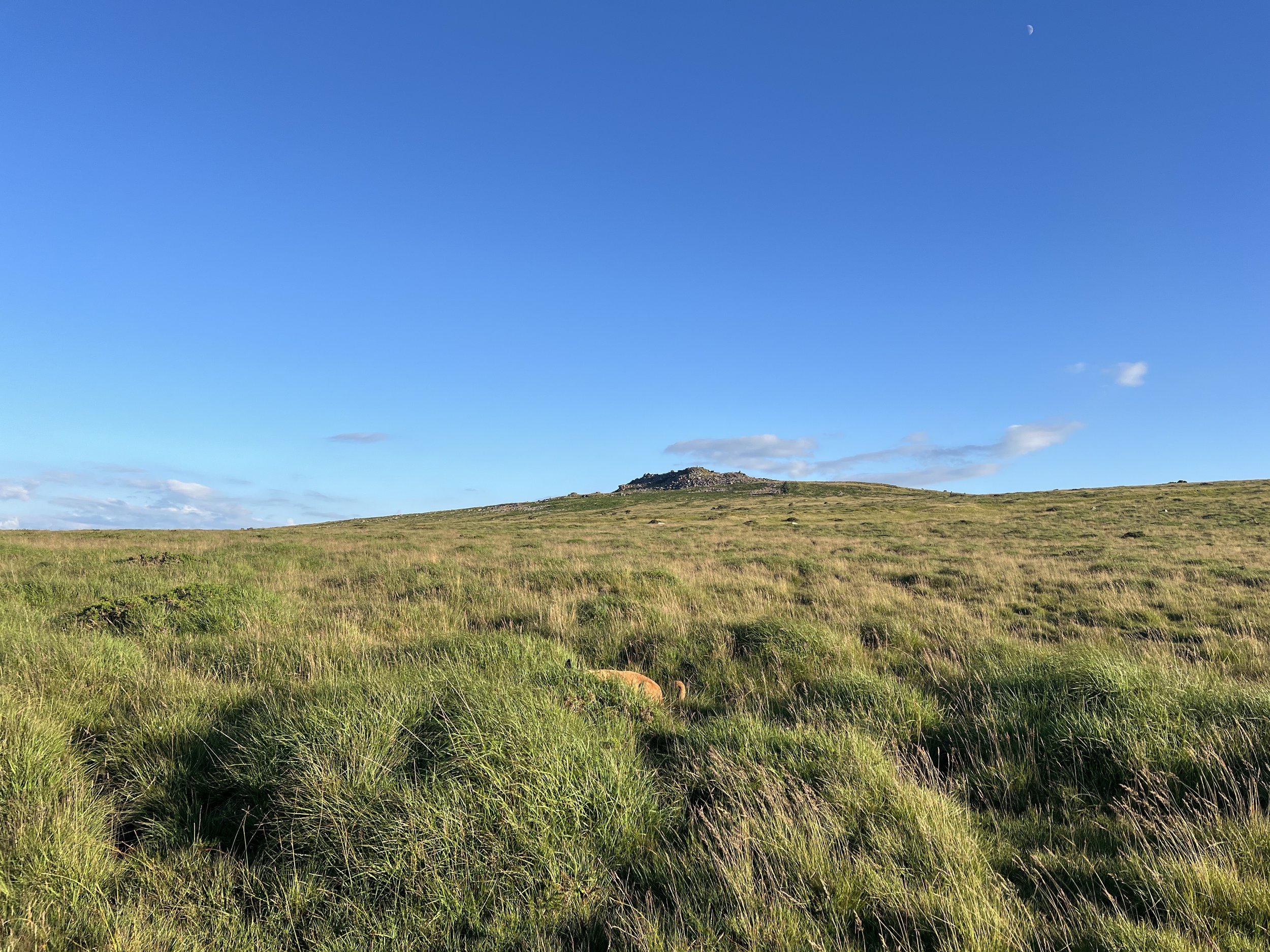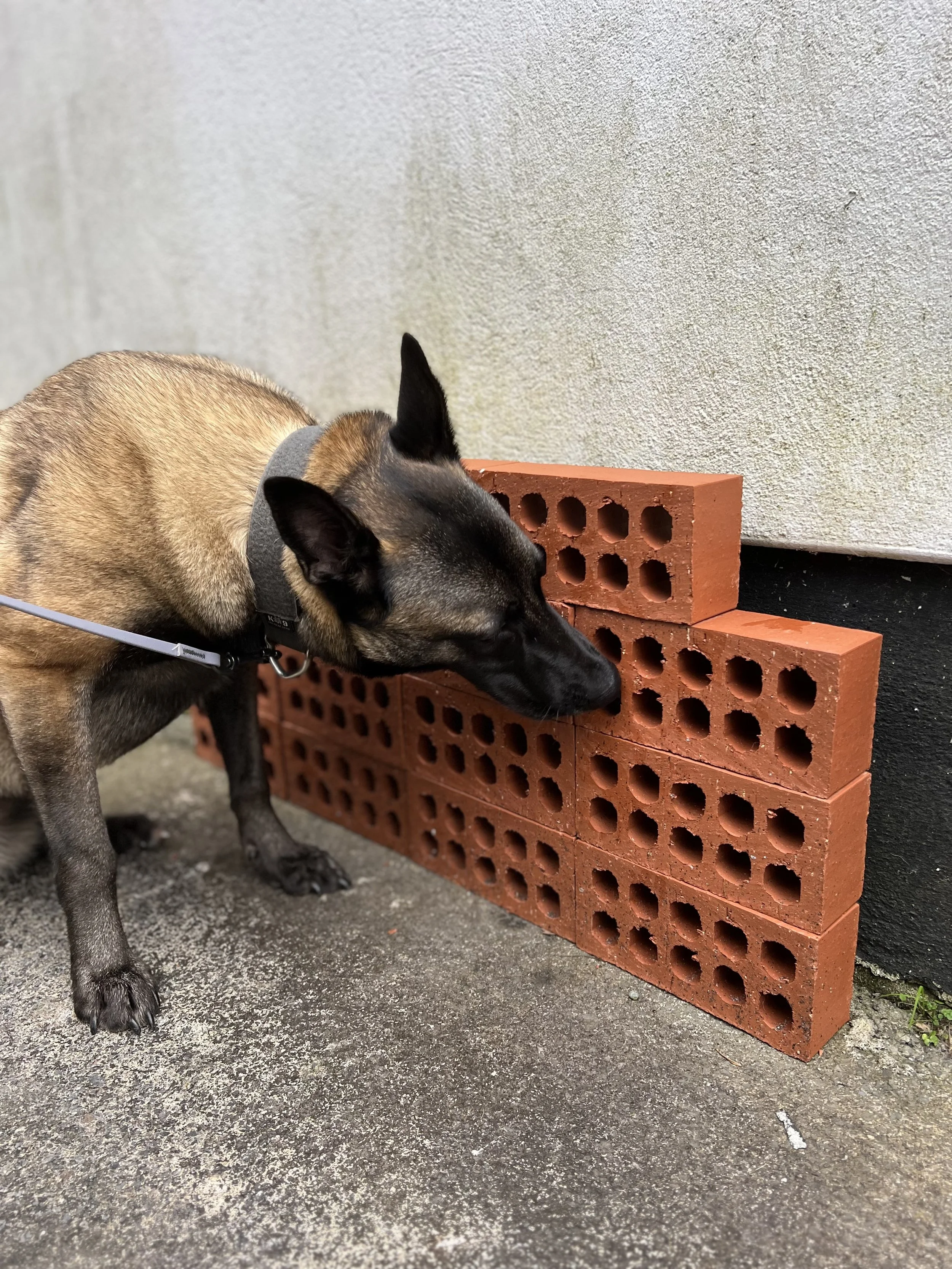Conservation Detection Dogs
Our trained conservation detection dogs are critical allies in wildlife research and preservation. With remarkable olfactory abilities, they are deployed for tasks such as wildlife carcass detection, invasive species identification, endangered species monitoring, and biosecurity checks. Our dogs provide non-invasive, highly efficient solutions that help researchers, conservationists, and environmentalists gather data.

Detection
Our expertise covers a broad range of surveying needs, from locating elusive and endangered species to detecting wildlife scat. Additionally, our dogs can undergo specialized training for various tasks, including biosecurity detection, invasive species detection, pathogen detection, and carcass detection. With their remarkable olfactory capabilities, our conservation detection dogs can be trained to find virtually anything, making them invaluable assets in preserving ecosystems and biodiversity.
Research & Collaboration
We offer versatile services to support research projects in various capacities and are open to collaboration with universities for projects. Our expertise, combined with an excitement to collaborate, ensures that we can tailor our assistance to meet the specific needs of academic endeavors. Whether it's wildlife surveys, environmental monitoring, or other research initiatives, we're committed to contributing our skills and resources to advance scientific understanding and conservation efforts.
Educational Outreach & Demonstrations
Through our educational outreach services, we provide engaging demonstrations showcasing the remarkable abilities of our conservation detection dog team members. Audiences gain insight into our dogs' rigorous training and their vital role in detecting wildlife and aiding in monitoring. These demonstrations inspire and educate individuals of all ages about the crucial bond between humans and other non-human animals in conservation efforts.

Want to see what our conservation detection dog teams have been up to recently? Check out our latest blog post on how our conservation detection dogs are helping with European hedgehog conservation and population monitoring.
How do dogs contribute in conservation?
Dogs possess an exceptional sense of smell that far surpasses human capabilities. Their ability to detect and distinguish odors with incredible precision—even in complex or challenging environments—makes them invaluable collaborators in wildlife conservation. Detection dogs work alongside researchers and conservationists to locate a wide range of targets, including endangered species, invasive species, and illegal wildlife products, all of which are critical for ecosystem health.
Detection dogs are becoming increasingly essential in wildlife monitoring and conservation efforts due to their speed, accuracy, and non-invasive approach. Unlike traditional survey methods, dogs can cover large areas quickly, identifying target scents with greater precision. They help reduce impact on fragile ecosystems while gathering more reliable and actionable data.
Key Contributions of Detection Dogs in Conservation
Efficient and Accurate Detection: Detection dogs can cover large areas in a fraction of the time it would take using traditional methods, such as traps or visual surveys. Their ability to accurately identify target scents helps to reduce false positives, providing researchers with more reliable results. Whether detecting invasive species, wildlife scat, or endangered animals, detection dogs are essential collaborators in collecting data and monitoring wildlife populations.
Non-Invasive Approach: Many wildlife surveys can disturb habitats or stress the animals being studied. Detection dogs, on the other hand, offer a non-invasive survey method. They detect odors by causing minimal disturbance to wildlife and their environments. This allows conservationists to monitor species without the risk of harming them or their habitats.
Versatility: One of the greatest advantages of detection dogs is their ability to be trained for a wide range of tasks. From invasive species detection to locating poaching evidence and wildlife diseases, detection dogs can be trained to identify specific species. Their adaptability makes them invaluable collaborators in any conservation effort.
Field Accessibility: Dogs are highly agile and adaptable, making them ideal for difficult terrains and environments. Whether navigating dense forests, rugged landscapes, or aquatic ecosystems, dogs can access areas that might be inaccessible to humans or technology. This is especially valuable in remote or hard-to-reach regions where traditional survey methods may fail.
Public Awareness and Engagement: Detection dogs also play an important role in raising public awareness about wildlife conservation and environmental protection. Their involvement in community outreach programs, public demonstrations, and educational initiatives helps engage the public and foster a sense of responsibility toward wildlife preservation. As they actively collaborate in conservation efforts, they inspire and educate individuals on the importance of protecting biodiversity and combating poaching threats. And honestly, who doesn’t love dogs? Their charm and enthusiasm make them great ambassadors for conservation, sparking interest and action in people of all ages.
Fetch success with our conservation detection dog teams!
Sniffing out opportunities for partnership? Contact us to learn how our conservation detection dog teams can support your efforts.



